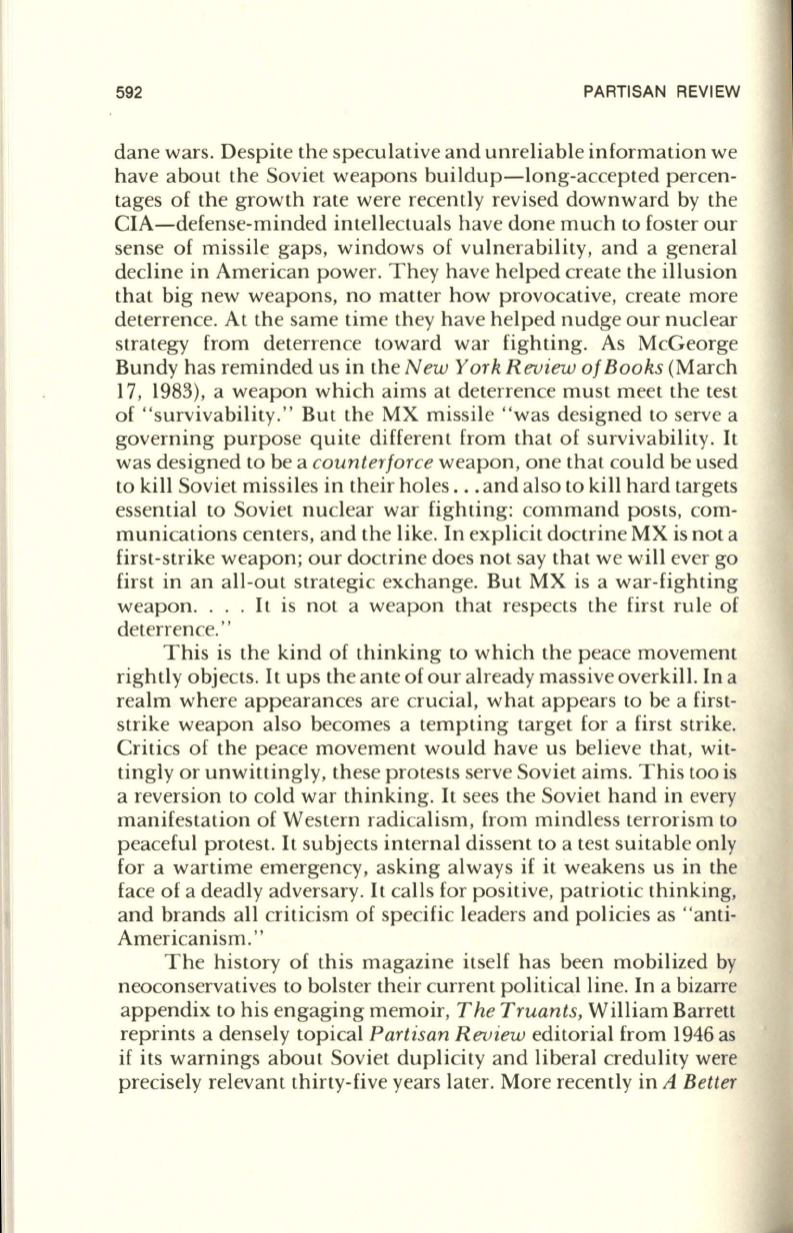
592
PARTISAN REVIEW
dane wars. Despite the speculative and unreliable information we
have about the Soviet weapons buildup-long-accepted percen–
tages of the growth rate were recently revised downward by the
CIA-defense-minded intellectuals have done much to foster our
sense of missile gaps, windows of vulnerability, and a general
decline in American power. They have helped create the illusion
that big new weapons, no matter how provocative, create more
deterrence. At the same time they have helped nudge our nuclear
strategy from deterrence toward war fighting. As McGeorge
Bundy has reminded us in the
New York Review of Books
(March
17, 1983), a weapon which aims at deterrence must meet the test
of "survivability." But the MX missile "was designed to serve a
governing purpose quite different from that of survivability.
It
was designed to be a
counterforce
weapon, one that could be used
to kill Soviet missiles in their holes ... and also to kill hard targets
essential to Soviet nuclear war fighting: command posts, com–
munications centers, and the like. In explicit doctrine MX is not a
first-strike weapon; our doctrine does not say that we will ever go
first in an all-out strategic exchange. But MX is a war-fighting
weapon....
It
is not a weapon that respects the first rule of
deterrence. ' ,
This is the kind of thinking to which the peace movement
rightly objects. It ups the ante of our already massive overkill. In a
realm where appearances are crucial, what appears to be a first–
strike weapon also becomes a tempting target for a first strike.
Critics of the peace movement would have us believe that, wit–
tingly or unwittingly, these protests serve Soviet aims. This too is
a reversion to cold war thinking.
It
sees the Soviet hand in every
manifestation of Western radicalism, from mindless terrorism to
peaceful protest.
It
subjects internal dissent to a test suitable only
for a wartime emergency, asking always if it weakens us in the
face of a deadly adversary.
It
calls for positive, patriotic thinking,
and brands all criticism of specific leaders and policies as "anti–
Americanism.' ,
The history of this magazine itself has been mobilized by
neoconservatives to bolster their current political line. In a bizarre
appendix to his engaging memoir,
The Truants,
William Barrett
reprints a densely topical
Partisan Review
editorial from 1946 as
if its warnings about Soviet duplicity and liberal credulity were
precisely relevant thirty-five years later. More recently in
A Betler


